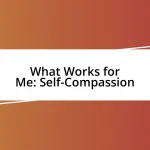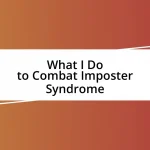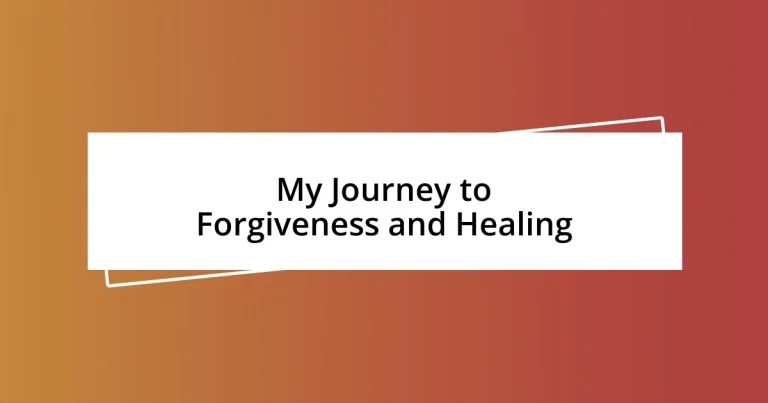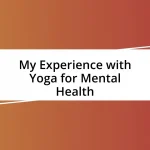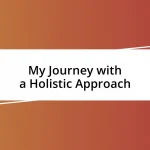Key takeaways:
- Forgiveness is primarily aimed at reclaiming personal peace, not excusing the wrongdoer’s actions.
- Recognizing the need for healing involves identifying emotional discomfort and unhealthy patterns, which is crucial for moving forward.
- Building a supportive network enhances the healing journey, providing understanding and connection, while practicing self-compassion fosters personal growth.
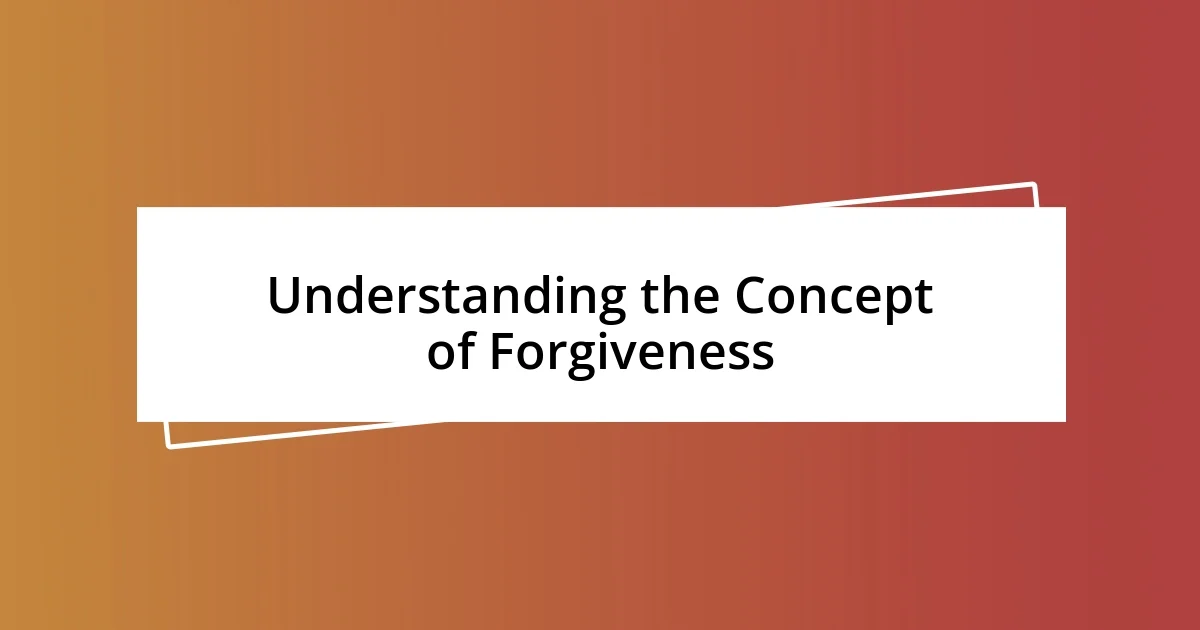
Understanding the Concept of Forgiveness
Forgiveness is often misunderstood; many believe it means letting someone off the hook for their actions. I remember grappling with this notion after a painful betrayal. I thought, “If I forgive, does that mean I’ll forget?” It took time to understand that forgiveness is about reclaiming my peace, not excusing the hurt.
When I finally let go of my resentment, I felt a heaviness lift off my shoulders. It was as if I had been carrying around a backpack filled with rocks, each one representing my anger and pain. Have you ever felt that kind of emotional burden? Realizing that forgiveness was primarily for my own healing helped shift my perspective entirely.
I’ve learned that true forgiveness doesn’t happen overnight. It’s a personal journey filled with ups and downs, requiring patience and self-compassion. Can you recall a moment when you chose to forgive, even when it felt impossible? It’s in those moments of vulnerability and strength that we grow, allowing ourselves to heal and ultimately move forward.
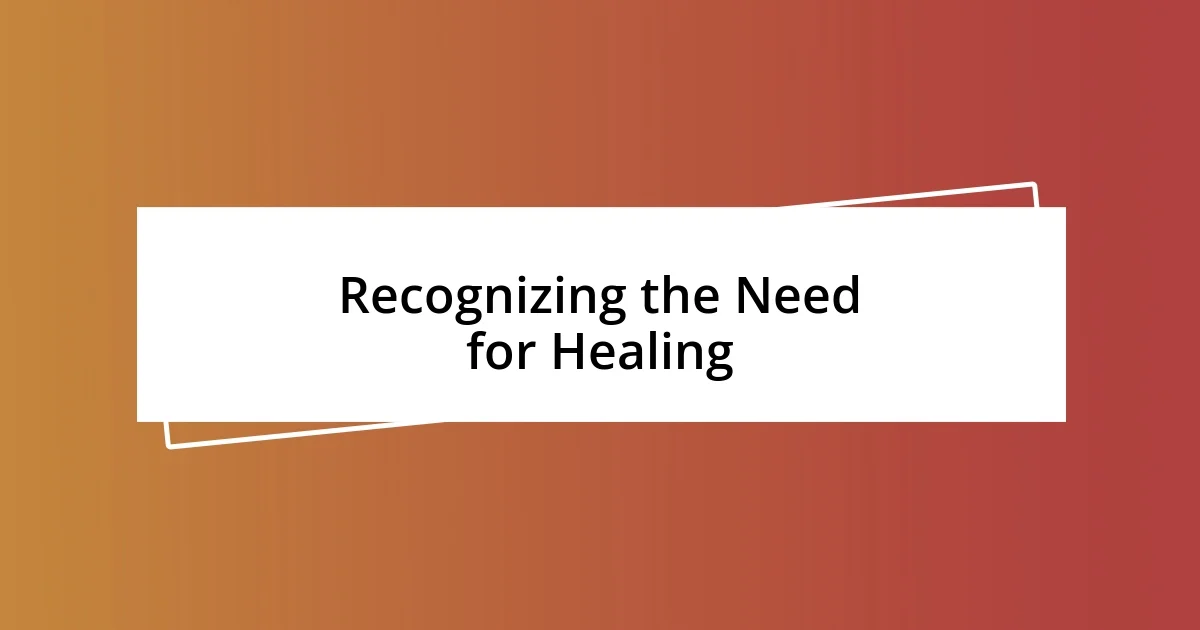
Recognizing the Need for Healing
Recognizing that I needed healing was a pivotal moment in my journey. I remember sitting in my favorite chair, reflecting on the emotional scars from past relationships. There was a nagging ache in my chest that I couldn’t shake. Acknowledging this discomfort was the first step towards understanding that my heart was yearning for healing, not just survival. Without that recognition, I would have continued to carry around my pain, denying myself the chance to truly move forward.
Here are a few indicators that signal the need for healing:
- Persistent feelings of sadness or anger that seem disproportionate to current events.
- Repeated patterns of unhealthy relationships or choices.
- Physical symptoms like fatigue or tension that have no clear cause.
- Difficulty in trusting others or forming new connections.
- An overwhelming sense of longing for peace and understanding.
Recognizing these signs can be uncomfortable but essential for anyone seeking a path to healing.
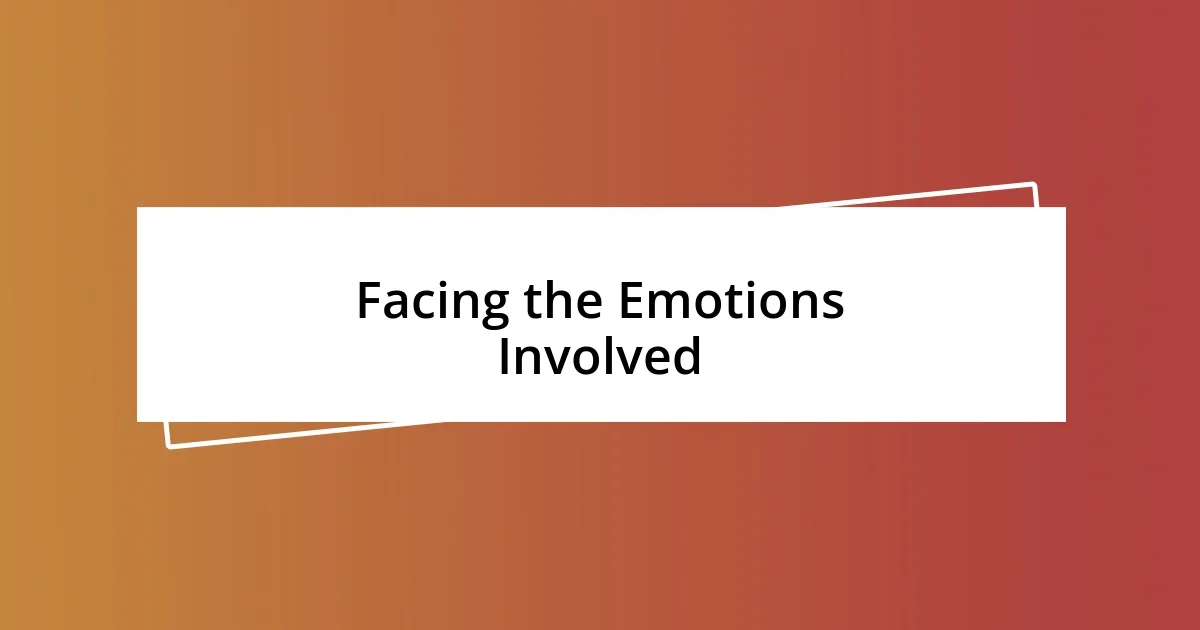
Facing the Emotions Involved
Facing difficult emotions head-on was not easy for me. In fact, I remember a day when a wave of sadness hit me so suddenly that it felt like I had been punched in the gut. I had often tried to push those feelings aside, thinking that by ignoring them, they would just magically disappear. But I learned that allowing myself to fully experience my emotions, even the uncomfortable ones, was crucial for my healing process.
There were moments when I felt overwhelmed by anger, wishing I could just scream into a pillow. I discovered that acknowledging this anger, rather than suppressing it, would eventually lead to a healthier outlet for those feelings. It’s almost like encountering a storm; I realized I couldn’t control it, but I could prepare myself to navigate through it. Have you ever stood in an emotional downpour, uncertain of how to find your way to shelter? I found that sharing my feelings with trusted friends offered me the strength and perspective I desperately needed.
One of the essential lessons I learned was that embracing vulnerability can be incredibly liberating. Whenever I faced my emotions, I felt a newfound sense of freedom, similar to finally removing a weight from my chest. What if we viewed our emotions as guides rather than enemies? This shift in thinking allowed me to understand that every emotion, whether joy or sorrow, played a role in my healing journey.
| Emotion | Response |
|---|---|
| Anger | Acknowledged and expressed through conversation |
| Sadness | Allowed myself time to grieve and reflect |
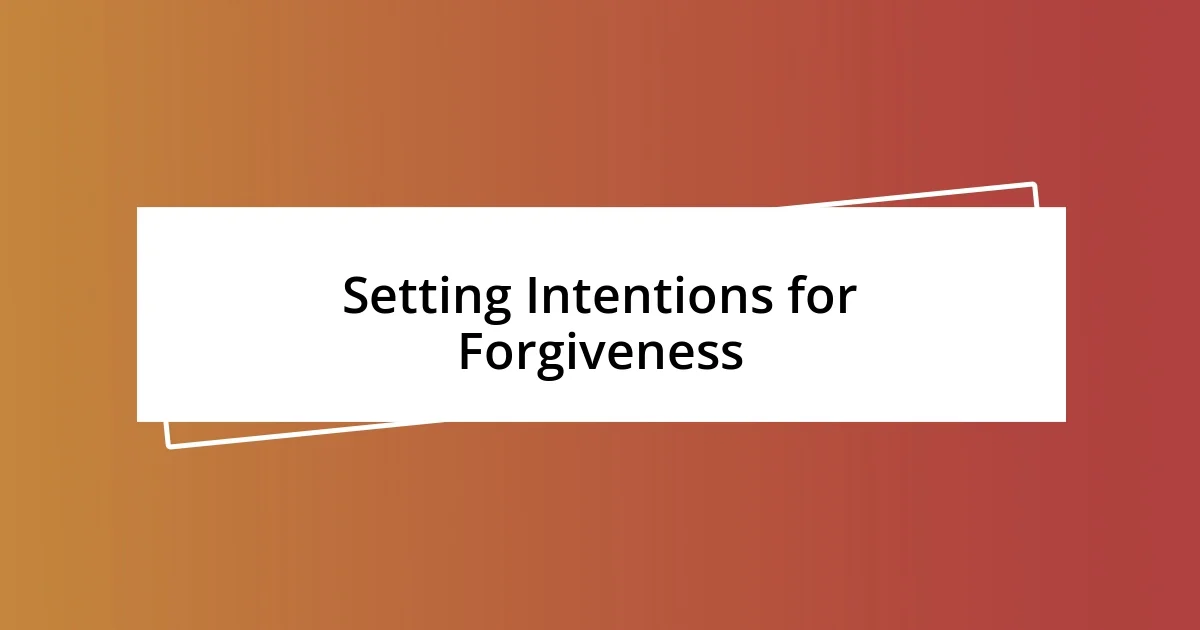
Setting Intentions for Forgiveness
Setting intentions for forgiveness was a transformative experience for me. Initially, I found myself hesitating, as the act of forgiving felt like giving up my right to be angry. But I realized that forgiveness wasn’t about excusing the wrongs; it was more about freeing myself from the burdens of resentment. Have you ever felt that the weight of grudges was holding you back? For me, setting the conscious intention to forgive became the key to unlocking emotional liberation.
As I penned down my goals for forgiveness, I noticed how clarity emerged from my scattered thoughts. I wrote, “I intend to forgive for my peace, not for theirs.” This simple intention helped reshape my mindset, shifting the focus from the person who hurt me to my own healing journey. The more I revisited this intention, the more I discovered layers of hurt that I had buried deep inside. It was empowering to acknowledge that my healing was in my hands.
I also found that setting intentions for forgiveness meant practicing self-compassion. There were days when I faltered, feeling overwhelmed by my emotions. During those moments, I would remind myself that it was a journey—a process, not a race. How many of us are too hard on ourselves when progress feels slow? I learned that patience with myself allowed my intentions to evolve naturally, creating a nurturing space for true forgiveness to blossom.
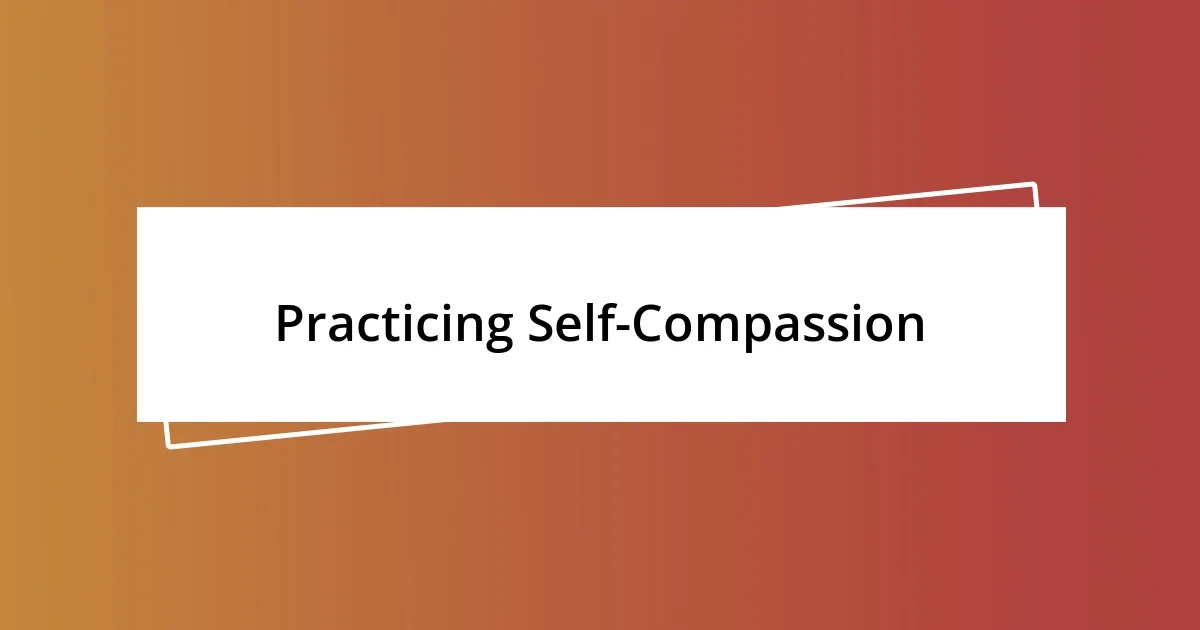
Practicing Self-Compassion
Practicing self-compassion was a revelation for me during my healing journey. I remember days when I was my own worst critic, berating myself for not making faster progress. It struck me one evening while reflecting on my experiences that if I wouldn’t speak to a friend this way, why was I so harsh with myself? This realization prompted me to treat myself with the same kindness and understanding I would offer to a loved one.
I discovered that self-compassion isn’t just a nice idea—it’s a vital practice. For instance, when I stumbled and felt the familiar waves of regret wash over me, I would pause and say, “It’s okay to be human. Mistakes are part of growth.” This simple phrase became my anchor, allowing me to forgive my missteps instead of dwelling on them. Have you ever found yourself caught in a cycle of self-blame? Recognizing these thoughts as a normal part of being human shifted my perspective and helped me acknowledge my feelings without judgment.
Over time, I learned that self-compassion involves recognizing my own suffering without attempting to escape or hide from it. I started journaling about my experiences, allowing my emotions to spill onto the pages without filters. One entry, I wrote, “Today, I feel lost and that’s okay. I’m learning.” This practice helped me observe my feelings instead of being overwhelmed by them. When I think back to those moments, I realize that embracing self-compassion nurtured a nurturing inner dialogue that was essential for my emotional well-being. What if we all took a moment each day to honor our struggles just as we would for a friend? That thought alone brings warmth to my heart and encourages me to continue prioritizing self-kindness on this journey.
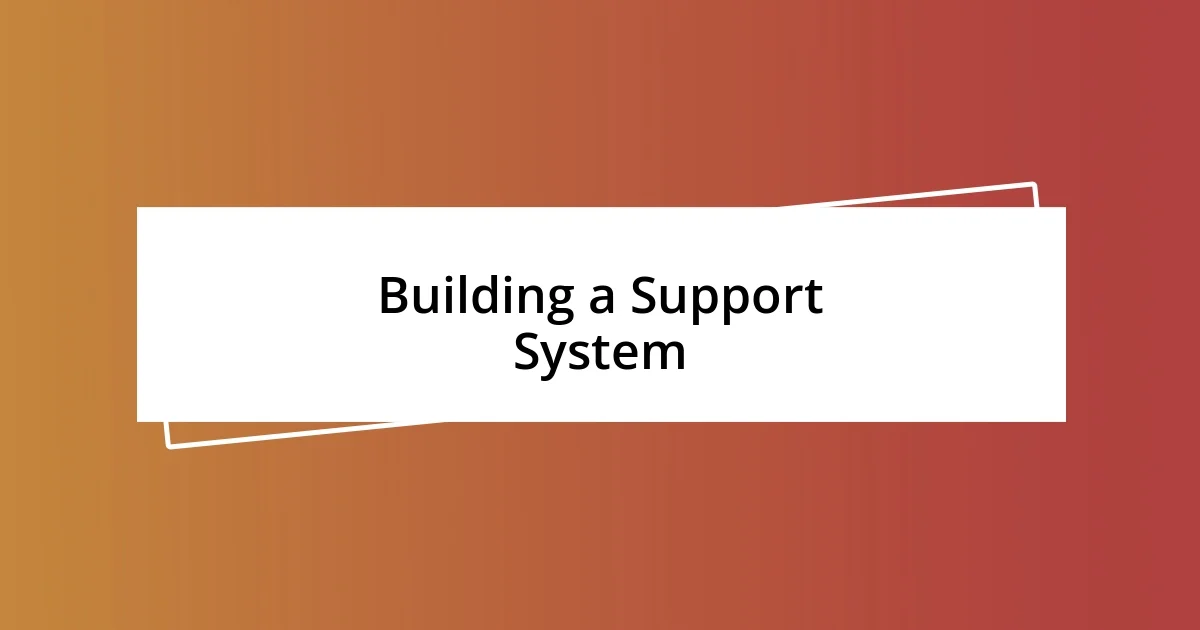
Building a Support System
Building a support system was pivotal in my journey to forgiveness and healing. I realized that surrounding myself with positive influences made all the difference. At one point, I decided to share my story with a close friend, and to my surprise, her empathy created a safe space for me to explore my emotions. Have you experienced that feeling when someone simply understands your pain? It can be incredibly liberating.
I often sought out support groups, where shared experiences fostered a unique sense of connection. Listening to others share their journeys helped me see that I wasn’t alone in my struggles. I vividly remember one session where a participant spoke about their feelings of betrayal. As I listened, something clicked in me; it was a profound moment of recognition, as I thought, “Yes, I’ve felt that too.” It reminded me of the beauty of community—it can lift you when you feel burdened by your experiences.
I also learned that it’s essential to be selective about who I allow into my healing circle. Not everyone understands the depths of emotional pain or the intricacies of forgiveness. When I was tempted to seek validation from those unwilling to listen, I took a step back. Have you ever had to distance yourself from negative influences? This conscious choice reinforced my commitment to fostering relationships that nurtured my growth, ultimately deepening my own healing process.
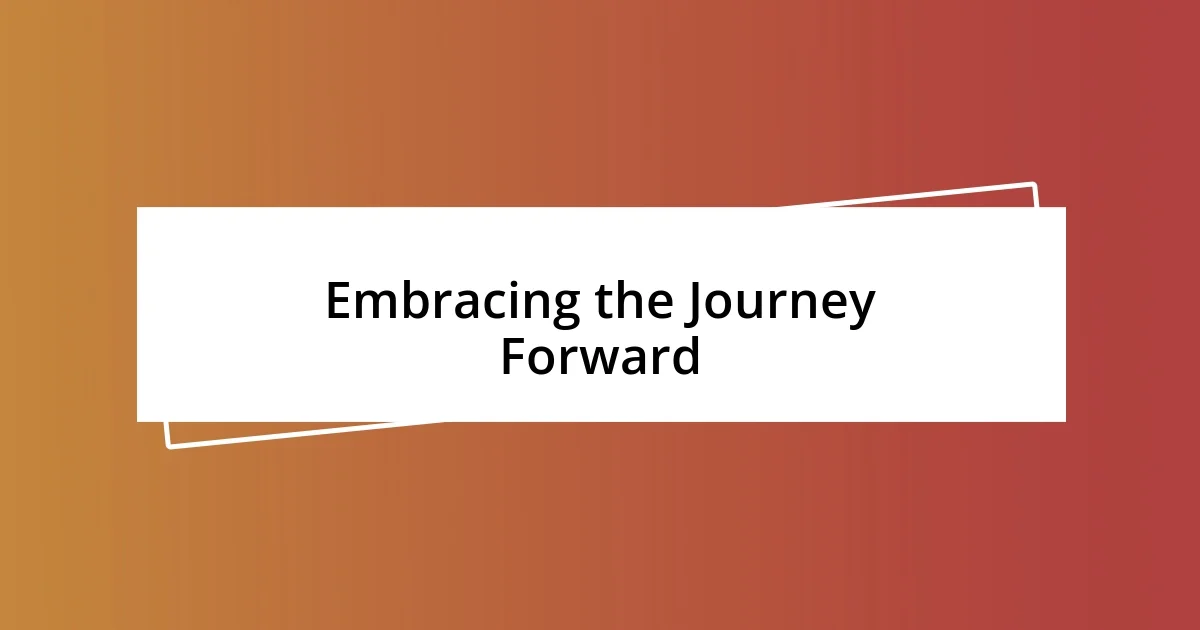
Embracing the Journey Forward
Embracing the journey forward requires a shift in perspective. I remember setting my sights on the future, feeling a mix of hope and uncertainty. It was in those moments of doubt that I would remind myself that the path to healing is not linear; it’s a series of ebbs and flows, much like the tide. Have you ever felt a sense of exhilaration alongside apprehension as you stepped forward? That’s precisely what I experienced as I began to trust the process.
As I chose to embrace each step, I began to notice the small victories—the days when I felt lighter, or when I held on to a positive thought against a backdrop of negativity. I vividly recall a morning when I looked in the mirror and smiled at the person staring back at me, something I hadn’t done in ages. A quiet voice inside echoed, “You are worthy of this journey,” and I realized that accepting my imperfections was a significant part of moving forward. Can you relate to that feeling of finally recognizing your own worth?
Every setback felt less daunting as I learned to view them as opportunities for growth. I made space for my emotions, allowing myself to feel disappointment without judgment. One particular afternoon stands out vividly; I sat outside, feeling the warmth of the sun as tears streamed down my face. Instead of pushing those feelings away, I let them come. I understood that embracing my vulnerability meant embracing my humanity. In doing so, I found the strength to take the next step—no matter how small—toward my healing journey.








